 Whether we are representing a buyer or seller, as Realtors it is our job to keep on top of what is going on in the mortgage industry. There has been a lot of press about the changes occurring within the lending arena, but even the news has a hard time keeping up with the extremely fluid nature of lending today. I think it would be safe to say that the mortgage brokers themselves have a real challenge in “knowing” what is going to happen from day to day.
Whether we are representing a buyer or seller, as Realtors it is our job to keep on top of what is going on in the mortgage industry. There has been a lot of press about the changes occurring within the lending arena, but even the news has a hard time keeping up with the extremely fluid nature of lending today. I think it would be safe to say that the mortgage brokers themselves have a real challenge in “knowing” what is going to happen from day to day.
First, let’s get this out of the way: “Zero Down” loans are no longer in existence. “No Income Verification/No Asset” (NINA) loans with small down payments have gone the way of the dodo bird and dinosaur. Fogging a mirror will no longer qualify you for a mortgage. While this makes getting a loan more difficult, perhaps it’s all for the best. Lenders actually should want to be sure that their borrowers can afford to pay them back. If you would like to hear a very interesting commentary on exactly how we ended up in this mortgage crisis, click HERE.
In fact, let’s not forget, it wasn’t all *that* long ago that 20% down was expected when purchasing. No fancy financing; just 20% down and a 30 year mortgage.
Does that mean you will need to have 20% down? And what about all those first time homebuyers? What can they do?
For the first time homebuyer there are still FHA programs out there that will allow as little as 3% down. First-time homebuyer or not, if a buyer isn’t in a position to put 3% down, they might want to explore a Gift Funds Program. The most common of these are known as Nehemiah and My Community programs, but they only apply if the seller agrees to pay 6% to the Gift Funds Progman and if the home qualifies for an FHA loan or a Conventional loan that allows gifts from charitable foundations. Considering that the FHA limit for the greater Seattle area is $567,500, these programs are realistic options for most buyers without large cash reserves. You can learn about these programs HERE.
Another often overlooked option is the USDA home loan. USDA provides very favorable interest rates and low down payment options, but there are limits, largely in regard to income and the “rural” location of the home. Loosely defined, a “rural” home in Snohomish County would be any home east of highway 9. You can learn more about USDA programs HERE.
So what if the purchaser or the home doesn’t qualify for FHA or USDA? There are still some programs out there where you can put down as little as 5%. In order to qualify for a loan with the minimal down payment, the borrower will have to provide full documentation of steady employment and all assets. And for the Self Employed, you can expect to have to put down at least 10%.
A good credit score will certainly help someone in search of the best rates and lowest down payment. If you haven’t done so lately, you may want to check your credit report to make sure there are no errors. Even if you aren’t considering a home loan in the near future, it is always a good thing to keep on top of what your credit report looks like. I have been using www.PrivacyMatters123.com and www.AnnualCreditReport.comto keep tabs on my credit score/report from the 3 reporting agencies. I’m sure there are many other online companies out there that can provide a similar service, so do your research.
Let’s not forget, probably one of the most important factors in getting a great home loan that fits your particular financial picture is to have a fantastic mortgage broker in your corner. With so many lenders and lending institutions dropping out of the industry, maybe you aren’t sure who you can call. No worries, just pick up the phone, call one of us at Pickett Street and we would be happy to refer you to lenders we know do a great job for our clients.
In short, the landscape has changed. It’s still possible to get a good loan with a good interest rate, but be prepared for the paper shuffle. Make sure you have your documentation ready, and if you’re thinking of buying a home in the next year, start putting money aside now.
